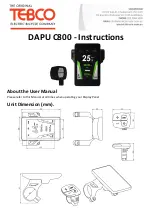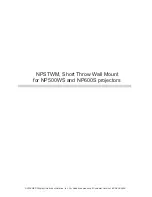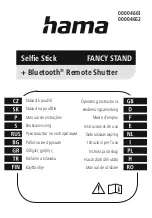
Amperometric analysis is based on the measurement
of current intensity. This intensity is produced by the
oxidation or reduction of an analyte when a suitable
voltage is applied.
In the case of free chlorine analysis:
As can be deduced from the above reaction, current intensity is proportional to the
amount of hypochlorous acid which is present in the measured solution.
The chlorine reduction takes place in the gold
working electrode (W) in which the suitable voltage is
applied referred to in the reading we obtain from the
reference electrode (R) Ag/AgCl. The electrical circuit
is completed by using a gold auxiliary electrode
(counterelectrode)(C). Finally, since the intensities
generated are very low (in the nanoampere range), a
fouth electrode in used in order to keep the signal as
stable as possible. This electrodes also made of gold
acts as a ground connection to eliminate any residual
current that might be found in the water.
It is important to bear in mind that hypochlorous acid is a weak acid and thus the
distribution of its species greatly depends on the pH of the water.
At the working voltage, the amperome-
tric sensor responds not only to hypo-
chlorous acid but also to hypochlorite.
For this reason it is fundamental that the
sensor response be compensated in
accordance with the pH of the medium.
With the WTRpro system, this correction
is automatically carried out in the pH
range of 6.5 to 9.0.
Outside this pH range, parasitic reations
on the electrode surfaces make it
impossible to correct the readings
generated.
4.-OPERATION
+
-
-
HClO + H + 2e Cl + H O
2
E
RE
CE
WE
A
ClO
-
Cl
-
H
2
O O
2
RE
CE
WE
RE
CE
WE
A
ClO
-
Cl
-
H
2
O O
2
V
0
10
20
30
40
50
60
70
80
90
100
4
5
6
7
8
9
10
11
pH
%
% HClO
%ClO-
R
C
W
GND
6
Summary of Contents for 44-010
Page 1: ...ESPA OL Cl2 SENSOR...
Page 2: ......


































